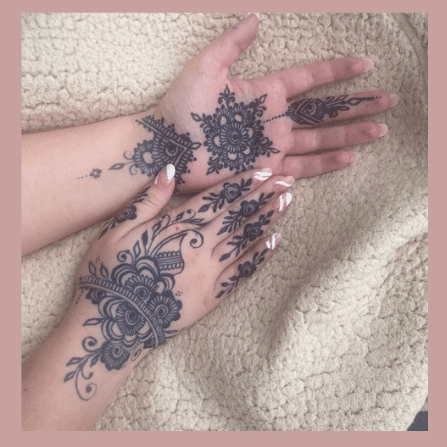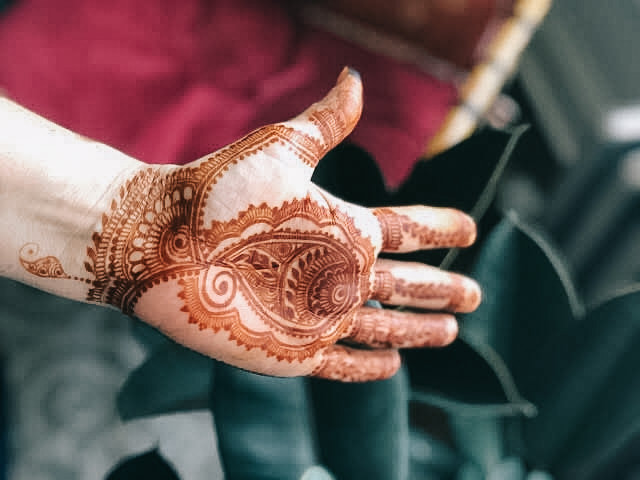Body Art at Alchemy
Henna and jagua are both plant-based folk art forms for temporary body art
Above: two snapshots show the main difference of henna and jauga stains with henna on the right and jagua on the left.
Jagua stains the skin blue and henna stains the skin in tones of red and brown. Both are beautiful and temporary. We only work with plant-based ingredients for our body art. That so-called 'black-henna' is NOT plant-based.
We don't use it.
Henna comes from a shrub with the botanical name Lawsonia inermis and stains the skin in red hues. It is a global folk art form that is practiced from North Africa to Indonesia.
Both stains last for 10 - 14 days depending on where on the body the art is placed, and how much exposure to water - - see "prepare + aftercare" for best practices and more information.
We don't use it.
Henna comes from a shrub with the botanical name Lawsonia inermis and stains the skin in red hues. It is a global folk art form that is practiced from North Africa to Indonesia.
- Basic aftercare: Henna paste is applied to the skin. Once dry the paste must stay undisturbed on the skin for 6 -8 hours (or more). For best results remove with oil or by gently scraping.
- Aftercare Jagua gel: Jagua gel is very easy to smudge and can take an hour to dry. The gel stays on the skin for 4+ hours and should be washed off with soap and water.
- Aftercare Jagua paste: Jagua paste works a lot like henna paste; care must be taken to avoid flaking and the use of simple syrup is recommended. The paste stays on the skin for 4+ hours and should be washed off with soap and water.
- People with fruit allergies may experience sensitivity to jagua.
Both stains last for 10 - 14 days depending on where on the body the art is placed, and how much exposure to water - - see "prepare + aftercare" for best practices and more information.




